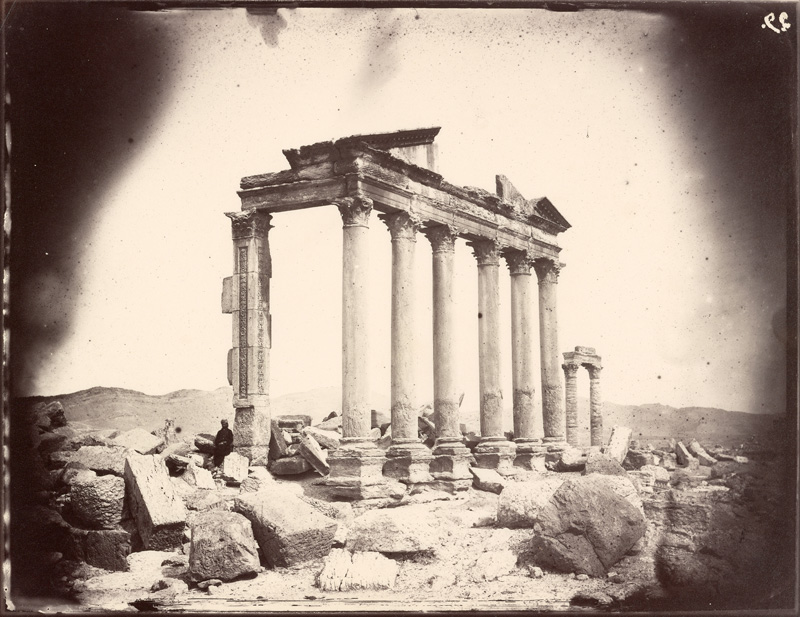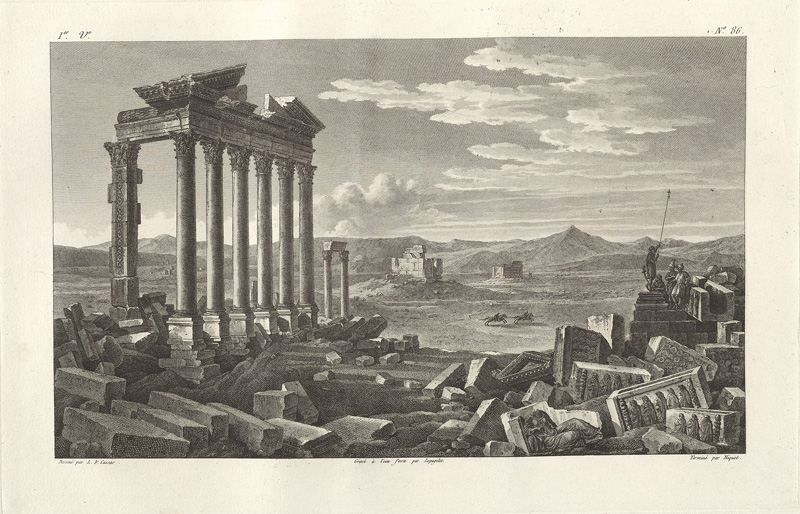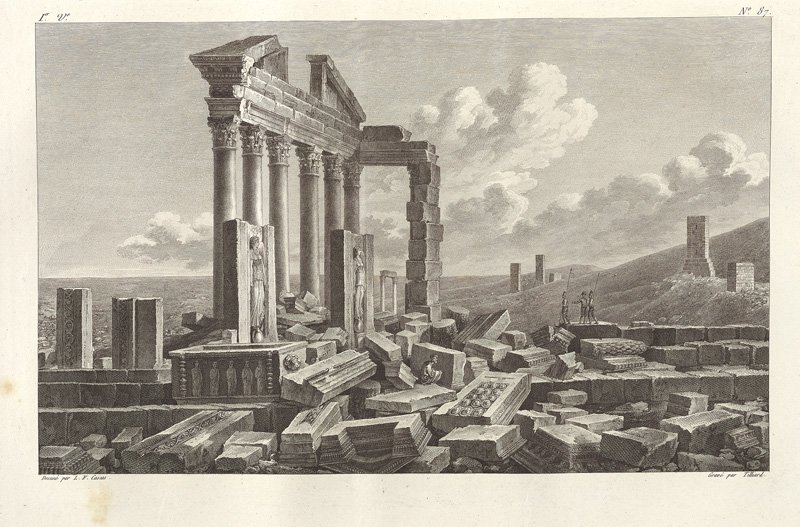Funerary Temple
The best surviving example of a Palmyrene temple tomb is a building commonly referred to as the Funerary Temple. An architectural type that begins to appear after the Roman emperor Hadrian visited the city in 129 CE, these later tomb types demonstrate a renewed connection to the West through a clear appropriation of an exterior form similar to the canonical Greek temple. In contrast, the interiors of Palmyrene temple tombs were more like those of the earlier tower tombs, resembling a mausoleum or ancestral crypt—richly adorned with Palmyra's customary funeral busts or massive sarcophagi topped with large sculptured figures, as seen throughout the Eastern Roman Empire. The placement of this tomb within the city is extraordinary. Instead of being in a necropolis outside the walls, it sits prominently at the western end of the Colonnade Street, signaling that the inhabitants of the tomb were of the highest social status.
Cassas's two views of the Funerary Temple accentuate the monumentality of the structure by including figures among the ruins. Holding to orientalist conventions, the artist depicted these local inhabitants with attributes of long pikes and exotic headgear. Vignes's treatment is more sober, capturing in his lens a lone figure nestled against an ornately decorated pillar to indicate scale. To heighten the scene, Cassas emphasizes sculptural elements and architectural fragments scattered across the foreground. Although Vignes's photograph attests to the presence of many large blocks near the Funerary Temple, it appears that Cassas has employed artistic license to embellish the quantity and arrangement of limestone blocks in his etching.






